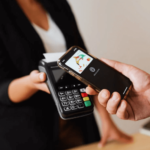Chances are you’ve noticed technology has found a home in the hospitality industry, from the tables at your favorite restaurant to the amenities listed on a hotel welcome email.
The impact of the digital age reaches far beyond the customer experience. Technology affects how the hospitality industry is conducted from the front to the back of the house – and down to the amount of salt in the next entrée you order.
In the 21st century, problems are being solved through programs that sharpen managers’ views of inventory, sales, food and labor costs, management training, and guest experience.
Whether through innovative software, devices, or applications, tech is changing how restaurants deliver food and how hotels accommodate guests.
Let’s examine some major business challenges technology can address in the hospitality industry and how innovations change the game for hospitality professionals worldwide.
True Cost/Profit
Particularly in the restaurant business, determining the cost of supplies versus the price a customer pays for the end product can be a complex calculation.
Companies such as CostGuard and SimpleOrder have emerged as leaders in restaurant management software to simplify and streamline this process.
Essentially, these all-in-one platforms combine and centralize the daily data a manager must consider to provide comprehensive and clear reports that can influence big and small business decisions.
Analytics data can be used to determine the actual usage of bar and prep items and to identify sales trends. It can also allow managers to see which menu items are successful from a cost perspective.
The software can separate bar and food costs, suggest orders, track price fluctuations, calculate overhead, and assess staff performance. This can significantly reduce the time and costs consumed by administrative duties.
The Need for Checklists
Running a restaurant can feel like an exercise in plate spinning. With so many moving parts, keeping a checklist can be a difference-maker for hospitality business professionals.
David Scott Peters is the creator of The Restaurant Expert, a web-based coaching, training, and software company designed to help independent restaurants maximize their profits.
In a video on the company’s website, Peters says too many restaurateurs “need to stop trying to do everything themselves because they don’t know how to delegate and instead focus on things that will grow and control the business. But they don’t know how.”
Checklists and manager logs increase accountability and ensure that vital functions are fulfilled daily.
Improved Point-of-Sale Systems
A robust point-of-sale (POS) system is critical in the modern hospitality industry.
Efficiency, ease of use, and the ability to integrate data into other software programs are factors to consider when weighing which POS system to implement.
There are numerous benefits to an effective POS system. Among other functions, they can track transactions, create hourly and daily sales reports, record employee work hours, calculate payroll data, and monitor menu items sold.
It also serves as a credit card terminal and receipt printer.
Tabletop Tech
The implementation of tabletop technology allows customers to do everything from browsing the menu to ordering and paying for their meals.
For some chain restaurants, this has led to a boost in customer satisfaction and an improvement in table turnover rates.
Chili’s, Uno, and Olive Garden are among the eatery chains that use tablets developed by Ziosk. The Dallas-based company says its 7-inch ordering, entertainment, and pay-at-the-table devices serve about 30 million diners monthly at 1,500 restaurants nationwide.
With games like trivia installed on tabletop tablets, customers can do more than order a drink or add a dessert.
And because they can pay using the device’s credit card reader, diners can wrap up their meal at their own pace, leaving restaurant staff to tend to the needs of other tables.
The pay-at-the-table factor can also reduce the risk of credit card fraud by keeping the payment card in the customer’s hands.
According to the American Hotel & Lodging Association, 55% of credit card fraud cases 2012 originated in the hospitality sector.
Check-in and Self-Service Amenities
Automated check-in or reservation devices are becoming the norm at hotels and restaurants.
Hotels are implementing self-service initiatives that increase guests’ convenience, while popular restaurants use apps like OpenTable to encourage diners to make reservations before arrival, minimizing wait times.
Starwood Hotels is attempting to build membership in its Preferred Guest (SPG) loyalty program by offering mobile check-in and keyless entry features as part of its SPG app.
With their smartphones, guests can skip the front desk by uploading their credit card information and downloading a virtual room key.
By enhancing the digital options for their increasingly tech-savvy diners and guests, restaurants and hotels can nurture brand loyalty and build repeat business.
According to a 2014 digital agency Magnani Caruso Dutton study, 70% of travelers say hotel websites, apps, and other digital tools influence their decision to book a hotel.
Author Bio: Joe Schembri, who works with Michigan State University’s hospitality management programs, wrote this article. Joe is interested in all things technology and has a knack for using technology to solve tough problems.





